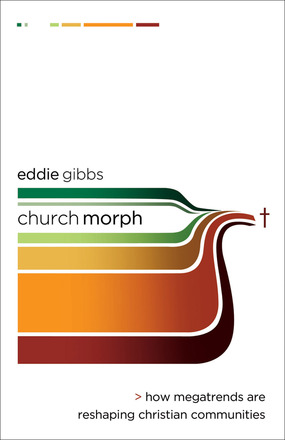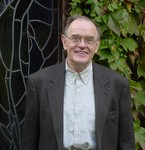Eddie Gibbs: Churchmorph
 Eddie Gibbs, Churchmorph: how megatrends are reshaping Christian Communities (Grand Rapids: Baker Academic, 2009), 222 pages, ISBN 9780801037627.
Eddie Gibbs, Churchmorph: how megatrends are reshaping Christian Communities (Grand Rapids: Baker Academic, 2009), 222 pages, ISBN 9780801037627.
This work is the product of a teacher and scholar’s lifetime experience. Eddie Gibbs has taught at Fuller for many years, and before that had extensive experience in England. He has intimate knowledge of the development of both church growth and missional thinking, and has been a studied observed of both Fresh Expression and Emerging Church. The result is this work in which he masterfully grasps and communicates the compass of his subject, presented in simple yet profound prose. I found reading this to be quite compulsive, bringing both insight and spiritual enrichment.
Gibb explores the thesis, ‘There are five megatrends impacting the churches of the West. These are the transition from modernity to postmodernity; the transition from the industrial to the information age; the transition from Christendom to post-Christendom contexts; the transition from production initiatives to consumer awareness; and the transition from religious identity to spiritual exploration’ (p 19).
To these five I would add a sixth: the transition from an understanding of personhood defined by (i) complex, plural relationships; towards personhood perceived in terms of (ii) fragmented individualism.

Eddie Gibbs (DMin, Fuller Theological Seminary) is professor emeritus of church growth in the School of Intercultural Studies at Fuller Theological Seminary in Pasadena, California.
This 6th megatrend is amplified by each of the 5 megatrends that Gibbs identifies and describes. The trend from modernity to postmodernity reduces descriptors and definitions that supported societal traditions and identities, further reinforced by the retreat of people from discursive interface face-to-face into detached interaction at information terminals. The diminution of awareness towards the traditions of Christendom and the increase of the pursuit of consumption prompts an easing away from the essence of Judaeo-Christian traditions and their emphasis on plural, organic identity.
But community itself as an emphasis is not enough. Many who have experienced the too often introspective emphasis on relationships of the Charismatic renewal of the 1980’s can bear witness to how community can turn in on itself. An emphasis on being relational must also be intentionally missional. Gibbs observes that one identified factor of succeeding church is a stress upon, ‘Communitas Not Community: The most vigorous forms of community are those that come together in the context of a shared ordeal or those that define themselves as a group with a mission that lies beyond themselves—thus initiating a risky journey’ (p 36).
In looking at new attempts in mission and outreach, Gibbs opines that these ‘will only gain significance as they reach out to the de-churched and never-churched segments of the population, rather than providing the latest attraction for bored, frustrated, or angry current churchgoers. They also need to be strongly in evidence in urban contexts, recognizing that our culture is driven by urban values and images, with suburbia increasingly becoming culturally marginalized’ (p 44).
Gibbs reappraises the nature of effective leadership in a post-modern environment, stressing the role of the leader as a catalyst, encouraging creative thinking and initiative. In the post-Christendom environment, churches need to recognized that they have not yet arrived, but are to move forward experimentally in mission. A focus on place needs to be replaced by a focus on people; a community of people on pilgrimage.
Category: Ministry, Pneuma Review, Spring 2012


